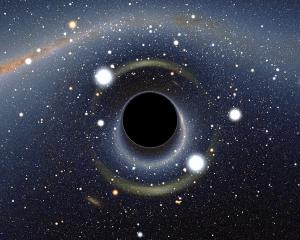Blog
Star Killer
19 January 2014
 Alain R.
Alain R.The Nature website has recently written about a preprint paper postulating that primordial black holes could collide with and destroy neutron stars.1 The paper goes on to argue that because we have not observed neutron star explosions these primordial black holes are not likely to exist. Of course that isn’t surprising.
The basic idea of a primordial black hole is that it would form during the early moments of the universe when the mass-energy density was really high. We know that there were fluctuations in the early universe, as evidenced from the cosmic microwave background. If some fluctuations got large enough fast enough, then they could collapse into a black hole before the inflationary period started to even things out.
Primordial black holes hold a strange position in astrophysics. On the one hand, they would be an interesting solution to the dark matter problem. Given what we know of dark matter, we know it can’t interact with light strongly, and it can’t be baryonic (meaning it can’t be made of stuff like protons and neutrons). If primordial black holes had formed before the period where protons and neutrons formed, then they would be non-baryonic. If they were of small enough mass, then they wouldn’t interact strongly with light. So they seem like a really good candidate for dark matter.
On the one hand, there isn’t any evidence for primordial black holes. None. If primordial black holes were dark matter, then they would make up the majority of mass in our galaxy. If they were around we’d see some of them gravitationally lens stars they pass in front of them. Some of them would collide with each other, and we’d see a burst of light. If they were small enough, some of them would evaporate in a burst of Hawking radiation. Now apparently some would collide with neutron stars and destroy them. We’ve looked for all of these things and found nothing. So far, every observational test we’ve done has turned up nothing.
There is still a very small mass range (about the mass of an asteroid) where observational evidence hasn’t completely ruled them out. If primordial black holes had this very specific range, and only this range, then they could still make up at least part of dark matter and remain undetected so far. But that is extraordinarily unlikely. This is why most astronomers have moved on from black holes as a solution to the dark matter problem, and are instead looking for things like WIMPS (weakly interacting massive particles).
Sometimes what seems like a really good idea just doesn’t work out.
Pani, Paolo, and Abraham Loeb. “Exclusion of the remaining mass window for primordial black holes as the dominant constituent of dark matter.” arXiv preprint arXiv:1401.3025 (2014). ↩︎